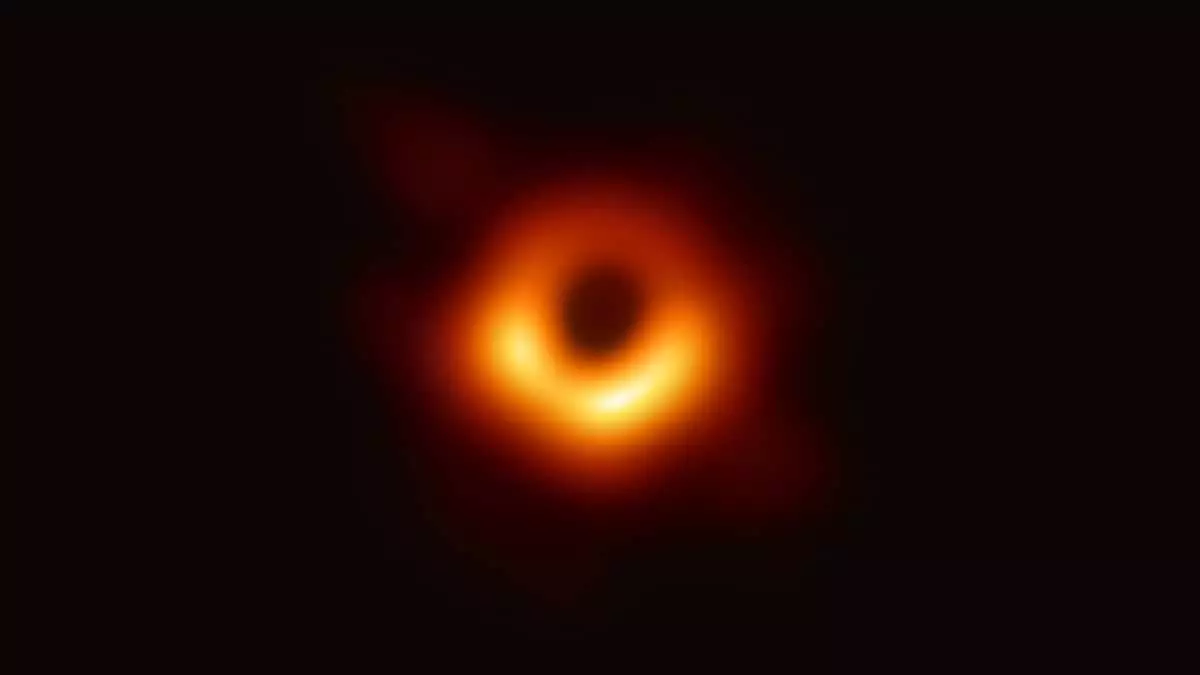Black holes have long been known for their insatiable hunger, swallowing stars that venture too close to them in one swift gulp. However, recent research suggests that some black holes may prefer to snack rather than gorge. Scientists have observed a supermassive black hole at the core of a nearby galaxy nibbling on a star that bears a striking resemblance to our own sun. With each close pass the star makes on its obit, it loses material equivalent to about three times the mass of Earth.
Black holes are captivating celestial objects with an unimaginable gravitational force that even light cannot escape from. This particular cosmic feast took place approximately 520 million light-years away from our solar system in a spiral-shaped galaxy. Although relatively small compared to other black holes, this supermassive black hole has a mass a few hundred thousand times larger than that of the sun. Contrasting this, the black hole, Sagittarius A*, at the center of our galaxy boasts a colossal mass of approximately 4 million times that of our sun. Other galaxies harbor supermassive black holes that need hundreds of millions of solar masses to satiate their appetites.
A Violent Environment
Black holes typically reside at the centers of galaxies, transforming their surroundings into some of the most turbulent and violent places within the universe. The researchers relied heavily on data gathered from NASA’s Neil Gehrels Swift Observatory to conduct their study. They observed the star orbiting the black hole every 20 to 30 days. During its journey, the star comes close enough to have some of its material accreted or sucked away by the black hole’s immense gravitational pull. The phenomenon, known as “repeating partial tidal disruption,” results in the heating of the stellar material to a scorching temperature of around 3.6 million degrees Fahrenheit, generating a substantial amount of X-rays detected by the observatory.
Astrophysicist Rob Eyles-Ferris of the University of Leicester in England, one of the study’s authors, explains that the star’s orbit will gradually decay over time, gradually bringing it closer to the supermassive black hole’s clutches. Eventually, it will venture so close that it will be completely disrupted, succumbing fully to the gravitational forces. However, Eyles-Ferris predicts that this process will take years, if not decades or centuries. This groundbreaking observation represents the first time scientists have witnessed a star similar to our own sun repeatedly being devoured by a supermassive black hole.
Unanswered Questions
The phenomenon of tidal disruption events and precisely how a star’s orbit affects them remains shrouded in mystery. Eyles-Ferris describes the field of study as rapidly evolving, with new discoveries emerging at any moment. This observation has underscored the fact that there are numerous unanswered questions in this area of research.
The recent discovery of a supermassive black hole snacking on a sun-like star has challenged the notion that black holes solely act as cosmic gobblers. The understanding that black holes can also indulge in periodic and repetitive feasting reveals a new dimension to these enigmatic celestial objects. As scientists continue to probe the universe’s mysteries, the study of tidal disruption events and the intricate dynamics of star-black hole interactions promise to unlock even more secrets about these captivating cosmic phenomena.


Leave a Reply